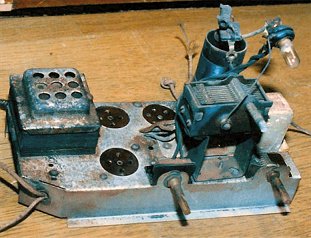
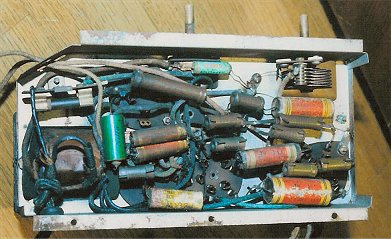
Chassis of Standard No.1 Radio (Nanaola Model N-10)
"Kikaku-1go" Radio : Standard Radio at War Time
(1941-47)
CONTENTS
About "Kikaku-1 go"Radio
Standard Set at War Time
Hermes Model F-8 The Osaka Musen Co., Ltd. 1941
G.R.Radio Kikaku No.1 K.K.Radio Product MFG Co. 1942
Leader Radio Kikaku No.1 S.S.D. Radio MFG. Co. 1942?
Nanaola Model N-10 Nanao Radio Co.,Ltd. 1942-44?
Televian No.1 Yamanaka Electric Co., 1942?
Carlson Recever Bando Musen Denki Seisakusho 1942?
Standard No.1 Set after WW II
Futaba "kokumin-gata"No.5 Futaba Electric MFG. Co., Ltd. 1946 (Approved No.11619)
Televian Model R10 Yamanaka Electric Co.,1947 (Approved No.11154)
4 Tubes Set Using Standard Radio Chassis Home brew 1947?
NOTICE:
Gothic is latest updates.
Japanese terms or company names that is untranslatable are shown in spelled
in Italics.
Saving strategic materials is very important demand for design of radio sets at wartime.
According to the national policy, Civilian wartime receiver needed simplified
and standardized specification.
Famous standardized receiver was the “Housoukyoku-gata” radio.
However production of the “Housoukyoku-gata” radio allowed only 19 certified big company.
The “Housoukyoku-gata” radio used transformer-less circuit and special tubes.
Supplies of transformer-less tubes were limited and expensive.
Production of transformer-less set was difficult to ordinary manufacturers.
Many small manufacturers produced radio set.
Most prevailed set used 4 tubes regenerative (0-V-2) circuit.
The line-up of tubes was 57-56-12A-12F.
Such receiver was called “Nami-Yon” (means “Average four tubes”) set.
Government controlled variations of radio set.
Only 15 standardized types of radio allowed supply on a rationing system.
The “Nami-Yon” set was one of the standardized types.
About 1941, The confederations of radio industrial union draw up the standard
of simplified 4 tube radio set.
The union named their standardized radio “Kikaku-1 go” recerver.
The Japanese term “Kikaku” means “standard” “1 go” means “No.1”.
We called “Kikaku-1go” “The Standard No.1 radio” on this article later.
The Standard No.1 Radios had different cabinet each manufacturer.
However, Size of cabinet and construction of chassis were same.
Chassis was small sized and made by thin steel.
Parts based on the Japanese Radio Standard were used.


Chassis of Standard No.1 Radio (Nanaola Model N-10)
The name “Kikaku 1 go jyusinki” was indicated on dial.
No pointer inside of dial existed. Shape of knob indicated tuning position.
Size of cabinet was 400(W), 240 (H), 145 (D) (mm). It was similar to Housoukyoku-gata No.122 receiver.
Standard No.1 Radio was planned for small manufacturer's private standardized radio.
However, some big manufacturer approved Housoukyoku-gata radio produced too.
In 09/1942, The confederations of radio industrial union dissolved by reinforcement
of control.
The radio receiver control union under controlled the associations of electric machinery control was organized.
The main members of new radio receiver control union were big Approved
Manufacturers for Housoukyoku-gata Radio.
Their power was stronger than small manufacturer’s one.
About supplies of materials, high priorities were given to Housoukyoku-gata radios.
The Standard No.1 Radio continued production, however, influence of this standard was weaken.
The name of "Kikaku 1 go" on the dial withdrew from the latest sets.
4 types of The Standard No.1 Radio were found.
4 types included manufacturers of small to big companies and eastern to western regions in Japan.
Hermes Model F-8 The Osaka Musen Co., Ltd. 1941
G.R.Radio Kikaku No.1 K.K.Radio Product MFG Co. 1942
Leader Radio Kikaku No.1 S.S.D. Radio MFG. Co. 1942?
Nanaola Model N-10 Nanao Radio Co.,Ltd. 1943
Televian No.1 Yamanaka Electric Co., 1942?
Carlson Recever Bando Musen Denki Seisakusho 1942?
Hermes Model F-8 The Osaka Musen Co., Ltd. 1941
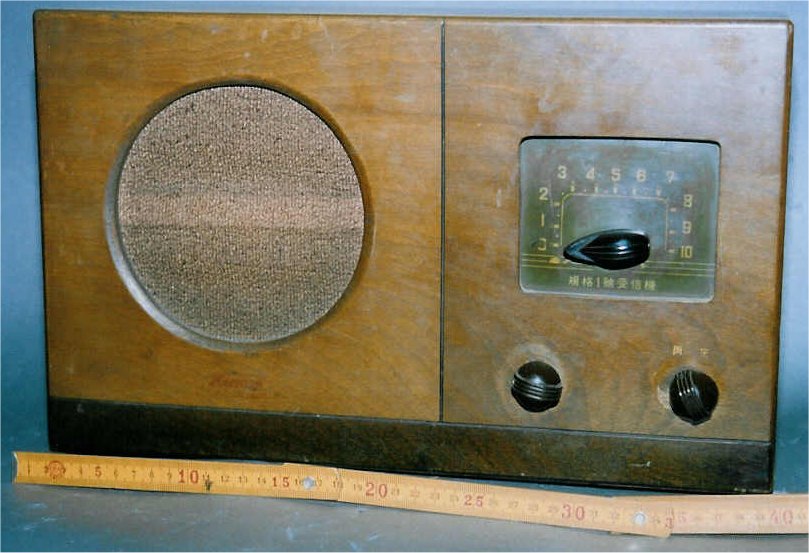
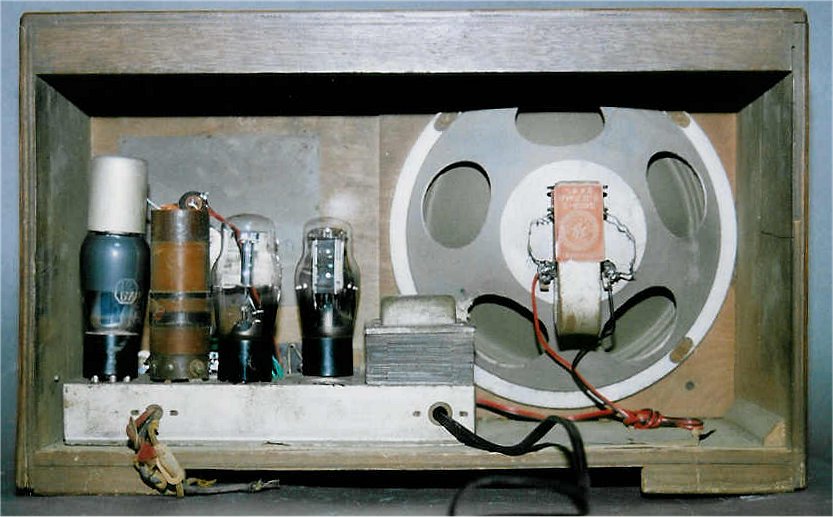
TUBES: 57-56-12A-12F, Magnetic Speaker (Paper Framed)
This is early model of The Standard No.1 Radio I found.
The Osaka Musen assembled radio set by supplied high quality parts from foremost manufacturers.
The cabinet of this set manufactured by Okada Case Co., that was specialist for cabinet.
(Collection No.11576)
G.R.Radio Kikaku No.1 K.K.Radio Product MFG Co. 1942
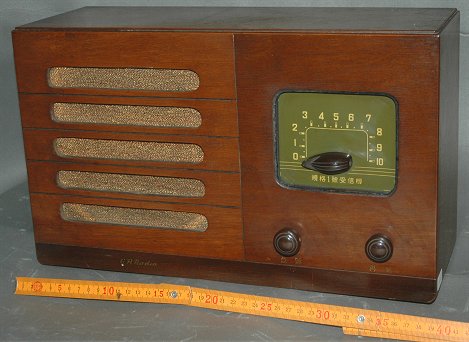
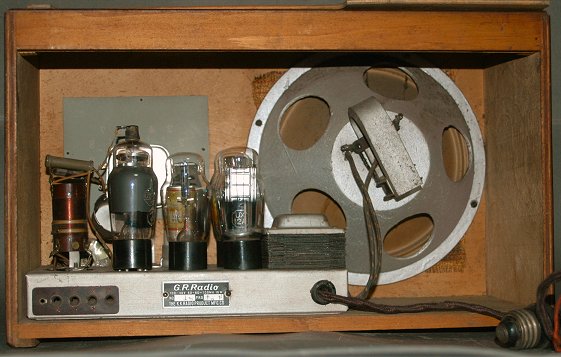

TUBES: 57-56-12A-12F, Magnetic Speaker (Paper Framed)
This was obscure manufacturer’s set.
Lay out on the chassis was different from other manufacturer’s set.
The production of The Standard No.1 Radio allowed to such obscure company.
This example remains very good condition like new.
(Collection No.11647)
Leader Radio Kikaku No.1 S.S.D. Radio MFG. Co. 1942?
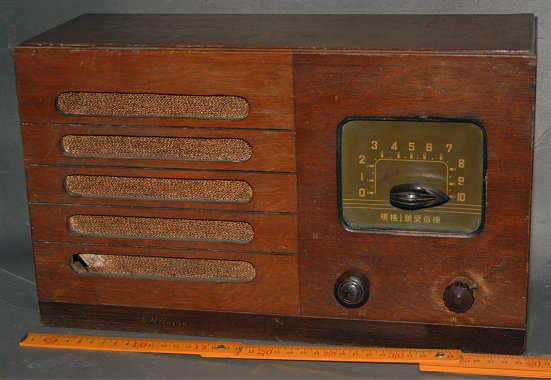
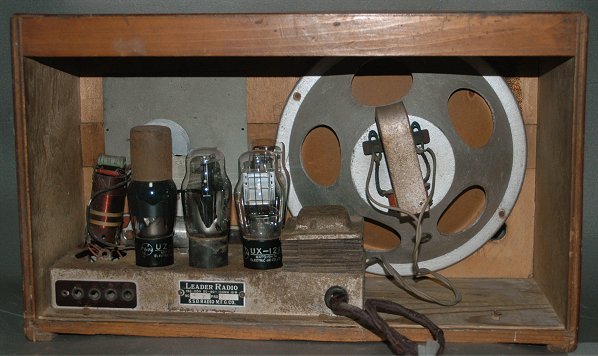
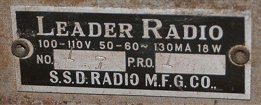
TUBES: 57 56 12A 12F, Magnetic Speaker (Paper Framed)
This set is same product of above G.R.Radio Kikaku No.1.
However, only the discription of name plate was deferent.
Left side of knob is unoriginal.
(Collection No.11864)
Nanaola Model N-10 Nanao Radio Co.,Ltd. 1943

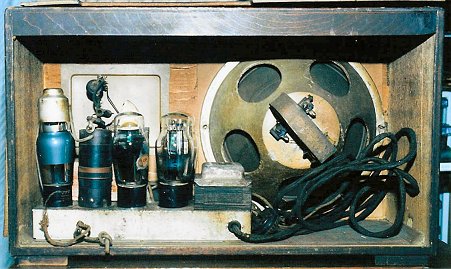
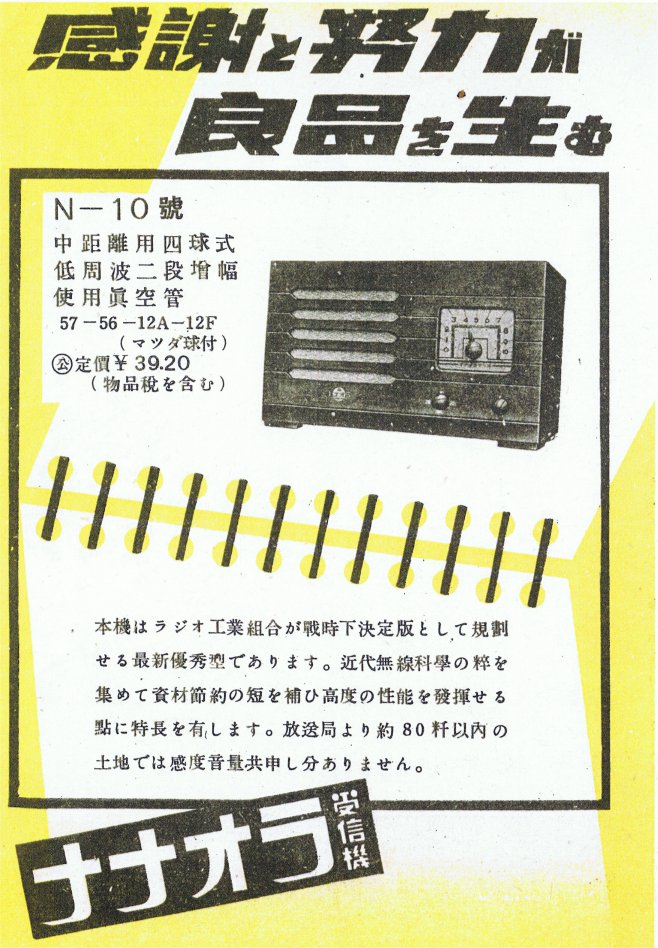
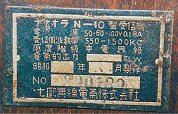
Catalogue (from Private Collection)
TUBES: 57-56-12A-12F, Magnetic Speaker (Paper Framed)
Nanao radio was one of the leading companies of Japanese radio industry
and approved manufacturer of Housoukyoku-gata radio.
Model N-10 was continued production until 1944.
The quality and finish were poor.
Variation model indicated “Nanaola receiver” instead of “Kikaku 1 go” was found.
It was probably later model.
(Collection No.11326)
Televian No.1 Yamanaka Electric Co., 1942?
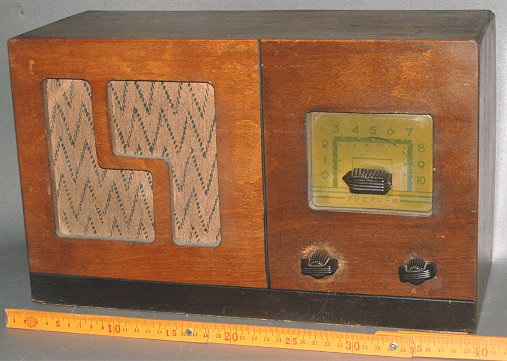
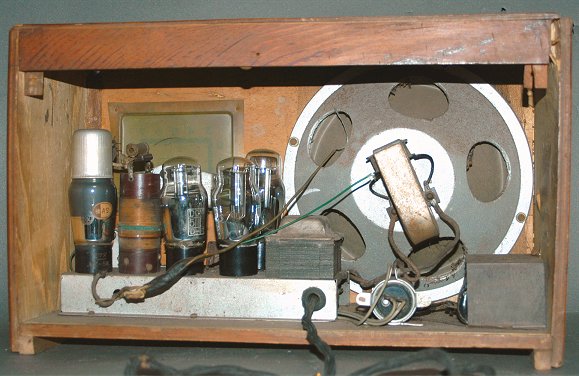
TUBES: 57-56-12A-12F, Magnetic Speaker (Paper Framed)
Yamanaka Electric Co., was one of the leading company of Japanese radio industry and aproved manufacturer of Housoukyoku-gata radio.
The name on the dial was “Televian No.1 Receiver” instead of “Kikaku 1 go”.
This model was provably later model of The Standard No.1 Radio.
Detector tube 57 was replaced to 58.
The quality of capacitor was poor, 2 capacitors added outside of chassis at servicing.
(Collection No.11671)
Carlson Receiver Bando Musen Denki Seisakusho 1942?
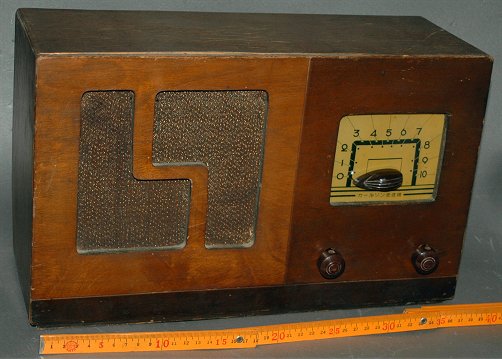
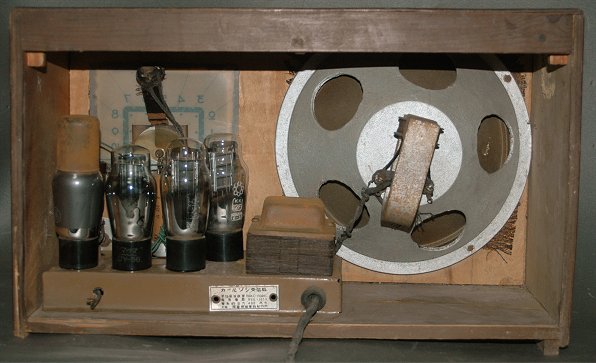

This set was manufactured by obscure manufacturer in Osaka.
The design of cabinet was similar to Televian No.1 set.
The name on the dial was “Carlson Receiver” instead of “Kikaku 1 go”.
Lay out on the chassis was different from Televian set and other manufacturer’s sets.
This set was probably not O.E.M. product.
(Collection No.11854)
The name of The Standard No.1 Radio withdrew at the end of WW II.
However, same types of radios continued production as new standard radio
“Kokumin-gata No.5” after the war.
At 06/1947, Production of Regenerative No.5 receivers were prohibited by GHQ to avoid interference.
The long era of Japanese regenerative radio ended.
Futaba "kokumin-gata" No.5 Futaba Electric MFG. Co., Ltd. 1946 (Approved No.11619)
Televian Model R10 Yamanaka Electric Co., 1947 (Approved No.11154)
4 Tubes Set Using Standard Radio Chassis Home brew 1947?
Futaba "kokumin-gata" No.5 Futaba Electric MFG. Co., Ltd. 1946 (Approved No.11619)
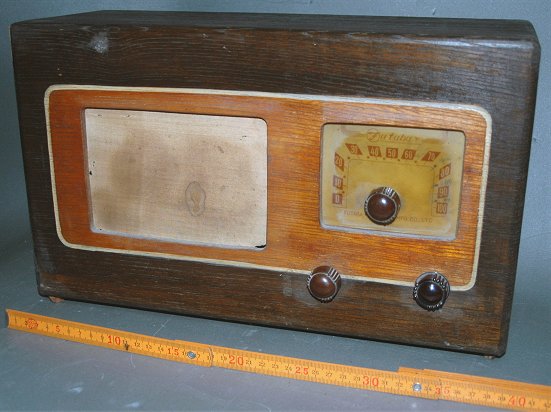
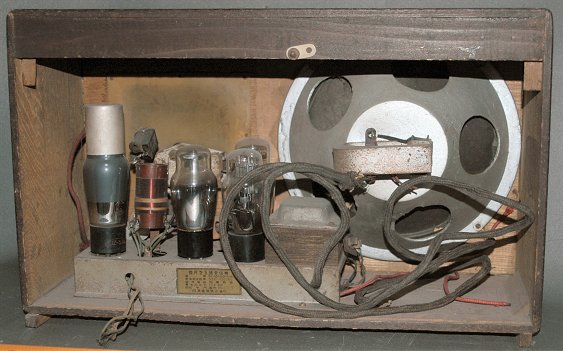
TUBES: 57-56-12A-12F, Magnetic Speaker (Paper Framed)
The construction and circuit of this Kokumin-gata No.5 receiver was similar to The Standard No.1 Radio at wartime.
The design of cabinet was modernized.
(Collection No.11137)
Televian Model R10 Yamanaka Electric Co., 1947 (Approved No.11154)
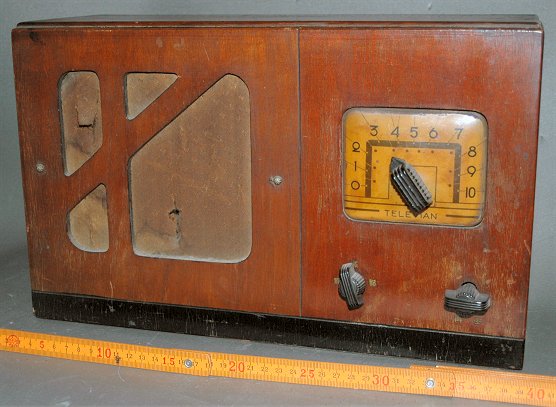
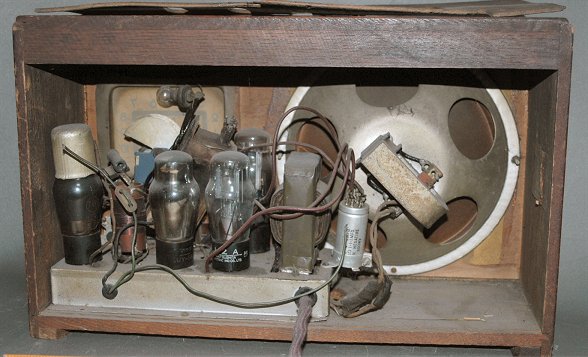
TUBES: 57-56-12A-12F, Magnetic Speaker (Paper Framed)
This set was re-styled model of Televian No.1.
The design of cabinet, shapes of coil and power transformer was changed.
Model number was changed from No.1 to R13.
(Collection No.11019)
4 Tubes Set Using Standard Radio Chassis Home brew 1947?
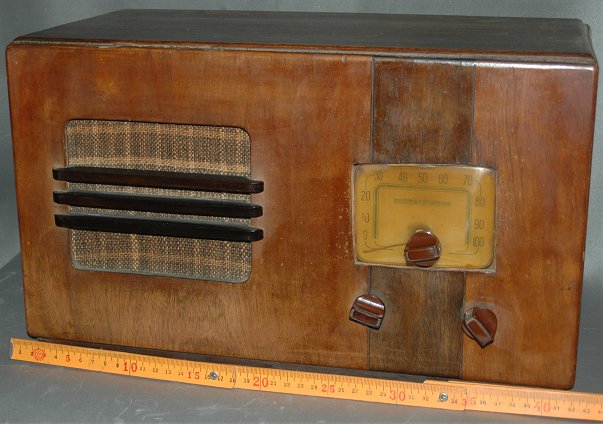
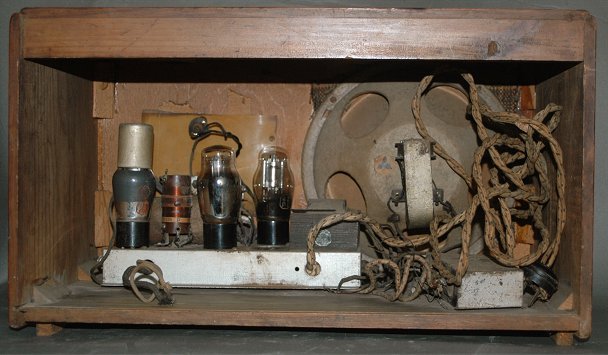
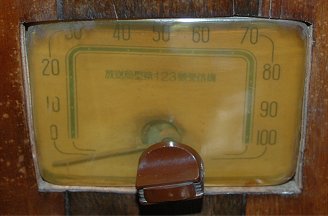
TUBES: 6D6-76-6ZP1-12F, Magnetic Speaker (Paper Framed)
This 4 tubes set manufactured after the war.
Chassis was recycled from The Standard No.1 Radio.
Tubes were 6.3V type. Finish was poor. This set was provably made by amateur.
(Collection No.11652)